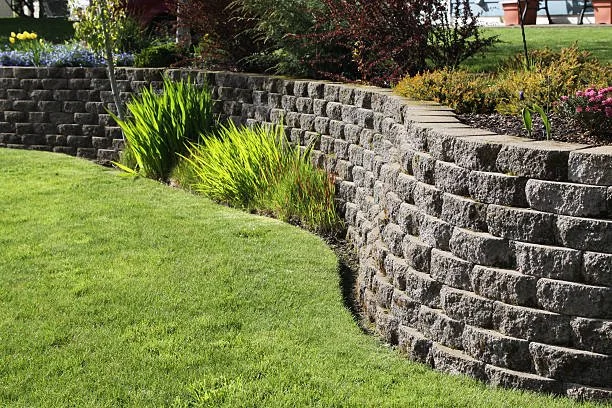How a Retaining Wall Can Improve Your Backyard
RH Business Marketing Solutions
Retaining walls are a common feature in many landscapes, not just around homes but also at businesses, schools, and parks. They provide both beauty and functionality, and these features can enhance your home just the same as they enhance other locations.
For homeowners considering building a retaining wall in the backyard, it is important to understand what they are for, how they can be used, and what added benefits they provide for the landscape. Here are some of the things that everyone needs to know about these versatile structures.
What is a Retaining Wall?
Before we go any further, it's important to define exactly what a retaining wall is. Generally speaking, a retaining wall is any structure used to separate two areas of differing elevation. In other words, the area behind the wall is higher than the area in front of it. This allows that elevation change to be made into a step instead of a slope.
Materials used for retaining walls vary, but most involve some type of poured concrete or stone. Wood is not a good choice because it will quickly decay after just a short time in direct contact with soil.
A properly built retaining wall needs a good footer and must be built with the blocks perfectly level and properly in line. Any deviation from this standard will make the structure weaker and could cause leaking or an eventual collapse.
The Benefits of Retaining Walls
Like many popular features, retaining walls provide both aesthetic and practical benefits to the landscape.
Ease of Lawn Maintenance
With a retaining wall, you can eliminate a steep slope by breaking it into two separate, level areas. Each of these will be much easier to mow and maintain than the original grade. This reduces the chances of a mishap with a mower or trimmer and makes the work easier, too.
Landscaping Options
A well-built retaining wall provides a great location to install plants, both at the top of the wall and the bottom. Its stone materials provide a beautiful, neutrally-colored backdrop for landscaping. Bright flowers stand out against it, adding value to your property and enjoyment to your outdoor time.
Enhanced Property Value
With so many direct benefits from retaining walls, it's easy to forget that you're not the only person who will like one. If you ever place your home on the market - or even if you just want to maximize value for a home equity loan - a retaining wall can provide real dollars-and-cents upgrades that more than pay for the project.
Reduced Risk of Water Damage
With a good retaining wall, you can manage water runoff in such a way that you reduce the pressure of waterlogged soils against your foundation and basement. This lowers the risk of leaks and flooding.
Environmental Benefits of Retaining Walls
We've looked at the beauty and value that a retaining wall can provide, but it is important not to overlook the environmental value of these structures. Properly designed retaining walls provide some important ecological benefits as well.
Surface Water Management
First, a retaining wall eliminates a steep slope that allows water to run quickly across the surface, contributing to erosion that is only partially mitigated by the presence of turf or landscaping. The stepped configuration created by a retaining wall reduces the speed of water as it runs off the area, creating less erosion.
Gutter Runoff Control
Just as rainfall landing directly on your landscape is better managed by flatter slopes, the water running out of your downspouts is also slowed by a stepped surface. This is even more important than the direct runoff because downspouts discharge water at a much higher rate and in a more concentrated area than the slow-moving, widely distributed water from rainfall.
Use of Recycled Materials
When it comes to benefiting the environment, it's always good to reuse and recycle. A retaining wall is a good example of an opportunity to do so. Repurposing old concrete can not only allow you to build an effective and durable retaining wall, but it can also reduce the cost of the structure and give you a chance to reuse old materials that would have otherwise ended up in the landfill.
Building a retaining wall provides a number of economic, ecological, and aesthetic benefits while also making your backyard a safer, more functional space that is easy to maintain and enjoy.
Written by Taylor McKnight, Author for Belgard Commercial
